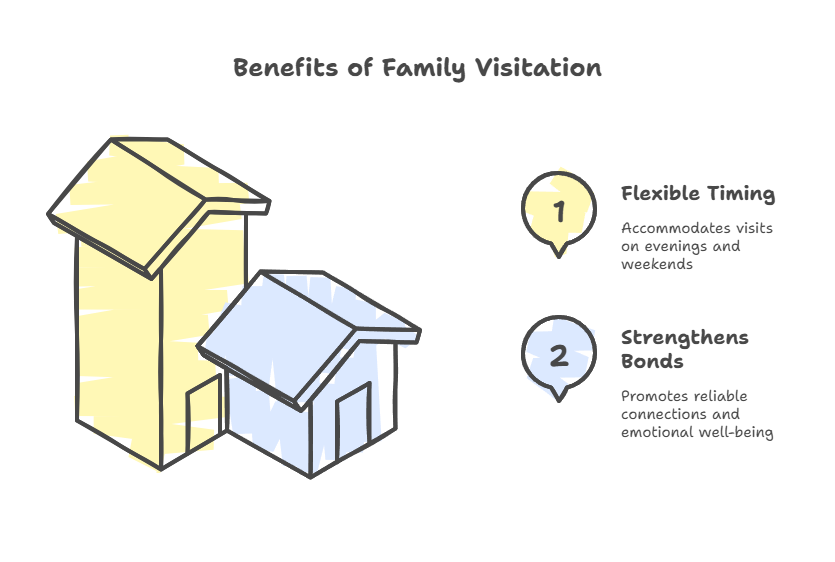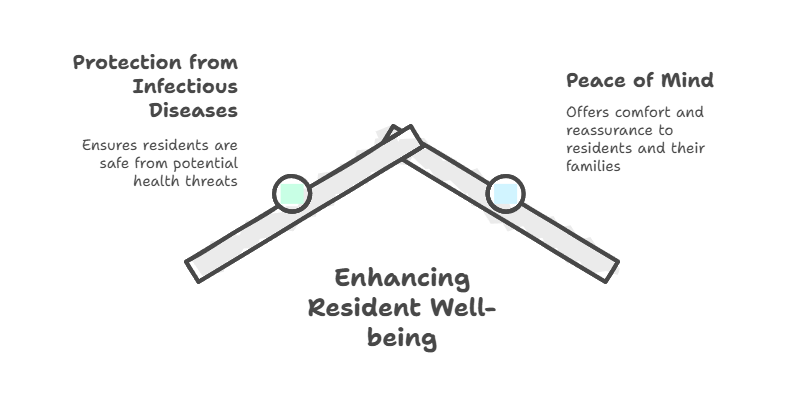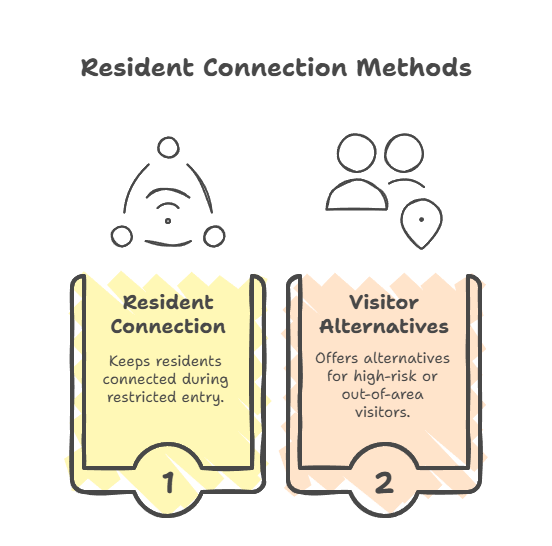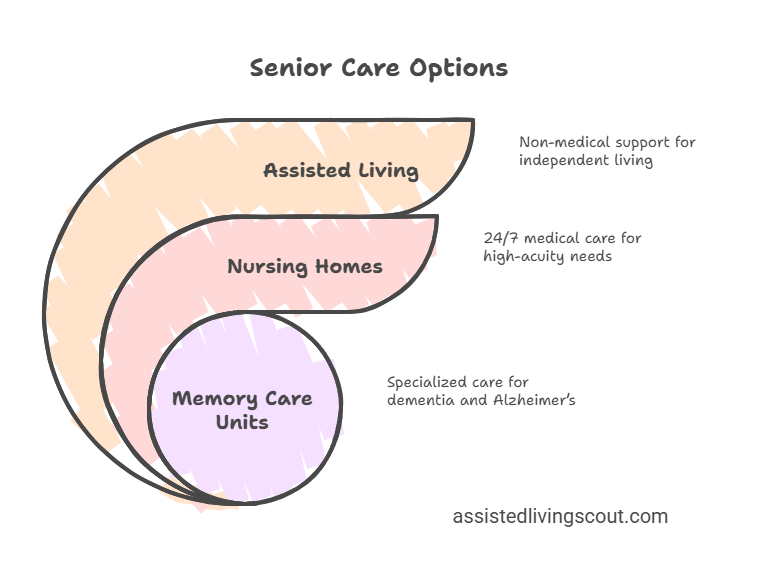 Back to
blogs
Back to
blogs

Current visitation rules and what to expect when visiting loved ones.
Understanding assisted living visitation policies is essential for families and friends seeking to maintain meaningful connections with their loved ones. In recent years, and especially since the onset of the COVID-19 pandemic, visitation policies have evolved dramatically—balancing quality of life with the safety of residents and staff. Whether you are preparing for your first visit or seeking to stay updated on current rules, this guide provides comprehensive information on what to expect, how to prepare, and how to navigate the complexities of modern assisted living visitation policies.
Visitation in assisted living communities serves not only to support residents’ emotional well-being but also to connect them to their communities and protect their rights. Proper policies ensure safety, privacy, and dignity for all involved.
Assisted living visitation policies in the United States are guided by:
While most facilities have resumed regular in-person visitation, enhanced infection control protocols remain in place:




Visiting a loved one in assisted living in 2024 and beyond typically includes the following steps:
Always verify the latest policies by contacting the community directly before you visit.
| Pros | Cons | |
|---|---|---|
| Regular In-Person Visitation | - Improves well-being - Strengthens family bonds | - Risk of infectious disease transmission - May be restricted during outbreaks |
| Virtual Visitation Options | - Safe for all parties - Accessible for remote families | - Can feel impersonal - Limited for residents with sensory issues |
| Feature | Assisted Living Visitation Policies: What to Expect | Alternative (Nursing Home/Memory Care) |
|---|---|---|
| Monthly Cost | $4,500–$5,000 average (varies by state & facility) | $7,000–$9,000 (nursing home); $5,000–$6,500 (memory care) |
| Care Level | Supervision, daily living support, emergency response | Skilled nursing, complex medical care, more intensive security |
| Visitation Policy Flexibility | Flexible, varies with facility policy and public health guidance | Often more restricted in higher-acuity settings |
| Socialization | Regular activities and facilitated visits popular | Limited contact for highly immunocompromised residents |
Note: Costs can differ by region, facility, and the level of care required. Ask the admissions office about current fee schedules and what is included in the visitation process.
A: Assisted living visitation policies are the rules and guidelines that outline when, how, and under what circumstances family members, friends, or outside guests may visit residents in an assisted living facility. These policies are designed to balance resident safety, privacy, and well-being while allowing for essential social contact.
A: Assisted living visitation policies tend to be more flexible than those in skilled nursing or memory care facilities. In higher-acuity or clinical environments, policies may be stricter due to medical vulnerabilities, but assisted living communities strive to maintain a homelike atmosphere and maximize family involvement.
A: The cost of basic visitation in assisted living is generally included in your monthly rent or care plan. Specialized services, like private event hosting or remote connection technology, may incur additional fees.
A: Assisted living is an excellent fit for families who value a balance between safety and personal connection. Most communities will partner with families to accommodate regular visits and keep residents involved with their loved ones, subject to public health needs.
A: Standard visitation is not covered by insurance. However, select telehealth or specialized therapy visits may be reimbursed if they are medically necessary—check with your insurance plan and community administration.
Assisted living visitation policies are facility-specific rules designed to manage how, when, and under what conditions families and friends may visit residents. These policies aim to balance physical safety and infection control with the social and emotional needs of residents.
Assisted Living Visitation Policies: What to Expect play a critical role in the experience of both residents and their families. Understanding the latest policies supports not only safety and compliance but also the emotional and psychological health of your loved ones. For families navigating these changes, open communication with facility staff and staying informed about federal, state, and local rules remain key.
For deeper resources and ongoing updates, explore our expert resources. For national guidance, visit the National Institute on Aging.